#it reminded me of when i read hamlet and like half the reason it struck me so deeply it bc it was written 400 years ago
Explore tagged Tumblr posts
Note
mariam! how's the goldfinch so far, are you liking it? is it interesting? ( or well, guess you could always answer once you've done with it ) i had started reading it but then put it on hold ( for fall 🍂 lol )
hi res! i just finished it about an hour ago, been collecting my thoughts...it was very good. donna tartt has such beautiful prose, there were so many bits i highlighted, she really has a way of capturing such specific feelings/sensations so well. her writing's just sublime, this was a true master at work. esp after the previous four books i'd read, which were total duds, this was a breath of crisp mountain air for me (not surprising, since i devoured the secret history). i really enjoyed the large colorful cast of characters and meditations on art and art history, which i'm a huge fan of. i think the first two chapters are just. Excellent. there's a slow, meandering feeling as you're reading, along with a sense of paranoia pulsing just underneath the surface that's just. so good. and makes you keep reading on and on and on. i loved how it was part suspense novel, part coming of age story. however, i will say not all of it was as equally engaging; some bits i felt my interest wane just a bit. i personally enjoyed the first half more than the second half, but i really loved the overall message of the book, as someone who's deeply entranced with old paintings and any old piece of art, whether it's a painting or a play or a novel. i love that we can read something or look at something that was created so long ago and like...all that distance and time just vanishes, you become a part of its immortality, along with all the others who came before you hundreds of years ago. it's so beautiful to me, that humanity is connected to each other like that. i loved that a lot.
this is the longest book i've read this year at nearly 800 pages, and i took my slow, sweet time reading it (12 days), which is something i've never done before...usually i get through a book relatively quickly, but for this one, it just made sense. it was 12 chapters, and they were very long chapters. i'd read when i woke up and before going to sleep, and i feel like that was the best way to do it ... i really felt like i was going on a journey through theo's life. like it was just a totally different reading experience for me, i can't quite explain it, there was no....pressure. like it was really just me and donna tartt’s exquisite writing. it felt like going through a box of fancy chocolates, having one piece a day. i knew i had to savor this experience. it felt quite lavish and like i was spoiling myself, going so slowly. maybe it was the sheer length i just gave in to, buckled myself in for the long ride. it made me realize it's actually quite fun to read a long book and i shouldn't be intimidated of them. so for me, half the fun of reading the goldfinch was not just the beautiful prose and entertaining story but also the experience of reading itself. now that i'm done with it, i feel like i've woken from a deep slumber, like what now? i'll definitely let this one steep for a while before starting my next read.
so out of the two donna tartt books i've read, i will say, overall, i prefer the secret history! for its overall cohesion and atmosphere. but i'm very glad i read this, it'd been on my tbr for years and i finally got to it at the right time.
#it reminded me of when i read hamlet and like half the reason it struck me so deeply it bc it was written 400 years ago#and here i was. in the 21st century. being moved by a piece of art that old. like that was just so crazy.....#man......donna tartt's just sooooo good. it's been 10+ years i wonder if we're going to get another novel soon....#answered#keenma
6 notes
·
View notes
Photo


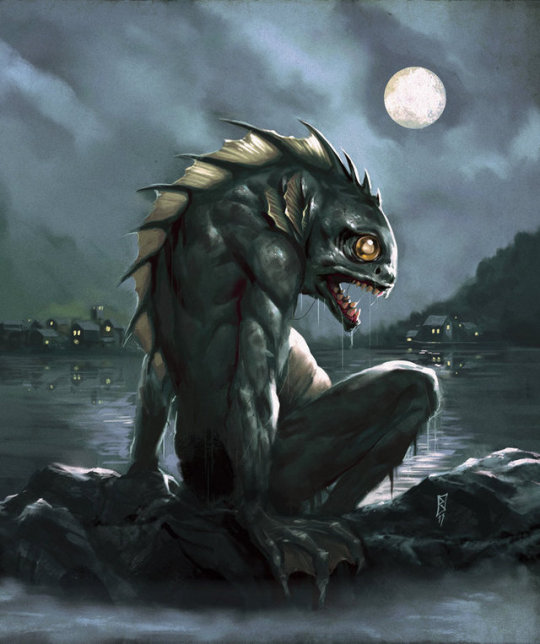
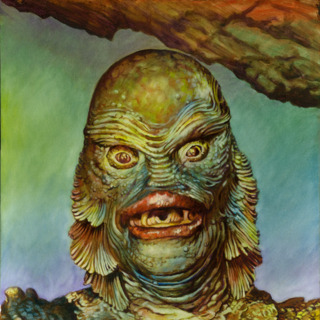
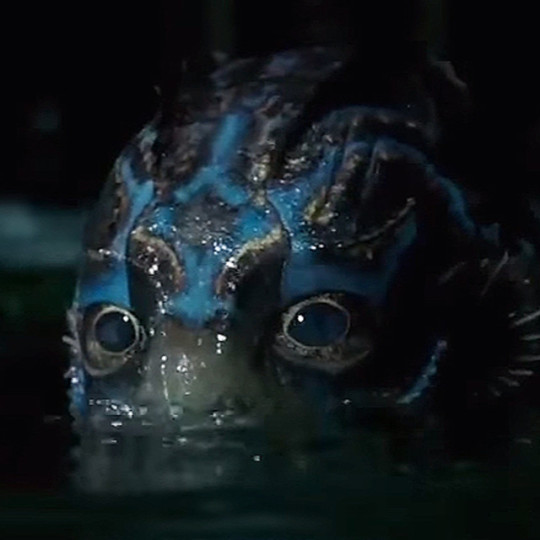
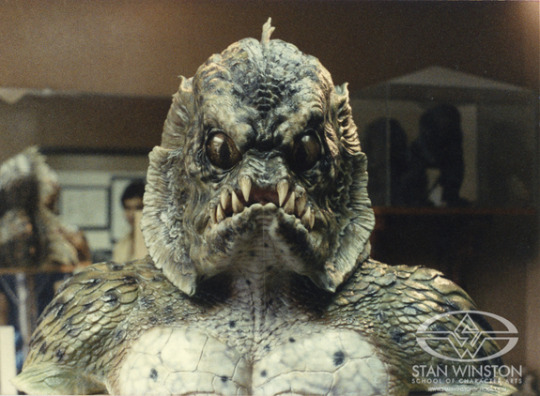
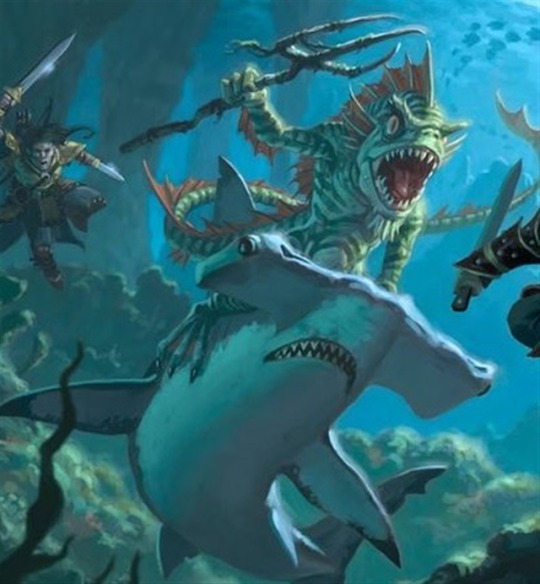


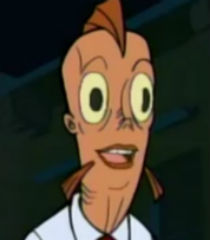
30 Day Monster Challenge 2 - Day #5: Favorite Fish-Man
1.) Abe Sapien (BPRD)
Good old Abraham Sapien. Been with us since the fist arc of Hellboy. Abe’s come a long way since then; met his mom, found his wife, subsequently lost her, reunited with his old steampunk buddies, got elected as antichrist after Hellboy and Liz, went into a coma, mutated a couple of feet taller, and so and so on. Into Abe is thrown a lot of bigger themes that inform us of the Mignolaverse’s overall composure. On the aesthetic side, Abe always brings the ocean, fish, and water with him. Lovecraft’s fear of the ocean, Verne’s fascination, and Melville’s awe of it are all wrapped up in Abe Sapien. In his past life, he even came from a whaling family, and he was part of a secret society of ocean-worshiping spiritualists. That’s the other aesthetic cue in Abe; Victoriana. Even when in body armor and running across the flooded remains of the Gulf Coast, Abe never loses a certain gentility. But as a character theme, more than anything, I think Abe represents tragedy. He’s lost more than anyone; Even Liz can still say she has her humanity. Abe can’t even remember his past life, and now he’s becoming a little more monstrous every day.
But through all that, Abe is still maybe the most relatable member of the BPRD for me. (Well, the superpowered ones anyway.) Abe isn’t really sure of who he is or his place in the world, and he’s still looking for those connections that root a person. At the same time, Abe sticks to the middle of the road, acting as the voice of reason even in unreasonable circumstances. He’s capable of emotional outbursts and faults, but for the most part, Abe succeeds at being a good person. Abe might be the strangest core member of the BPRD, but that he’s never inhuman. We don’t need to be super heroes; just basically good people are enough to keep the world running.
2.) Davy Jones (Pirates of the Caribbean)
Man, I just love how cool this guy is. Sea monster octopus pirate; that’s a character description that makes my inner ten year old want to jump and down. Davy Jones’ whole character design is just so nifty; tentacle beard, organic peg-leg, crab-claw hook hand, a sweet pipe and a giant hat. Hat’s also important for the other reason I love Jones; plays into so many mythical archetypes. Costumers for PotC explicitly stated they picked Jones’ hat because it looked like horns, and they really wanted Jones to fit his role as essentially the pirate devil. As the PotC spans out, Jones is revealed to have been even more legendary characters; he’s the Old Man of the Sea that Odysseus had to wrestle to go to Hades, and Charon guiding souls over to the underworld. I’ll be honest, Davy Jones’ pathos with the lost love never really struck a chord with me. Bill Nighy’s performance of it was great, though, so props are definitely in order for that. And last, but certainly not least, I can’t not love a man who keeps a kraken as a pet.
3.) Deep Ones (H.P. Lovecraft)
The classic. The first. Your one and only. It’s beginning to look a lot like fish-men. The blue-collar workers of the Cthulhu Mythos. H.P. Lovecraft’s fear of the ocean and corrupted bloodlines all wrapped into one beautiful, horrible fish creature. Nothing quite beats Lovecraft’s originals; he goes out of his way to describe them as alien, foul, and horrible. They’re another one of those monsters you can practically smell through the pages. I think it’s safe to say that half the other fish-men on this list wouldn’t exist without the Deep Ones. People are still scared of the ocean and the alien things living in it, and the Deep Ones give that fear a face. All the while they call to some primal part of us, an archaic memory that remembers when our species used to be fish, and they tell us to come home. Just as angels call us to come to God, the Deep Ones call us back to the sea. (Also; fat and hunchbacked Deep Ones only. I’m sorry; I wish I didn’t have to make that call. If it was up to me, all Deep Ones would be valid. But these are the times we live in, and sacrifices have to be made, preferably to Father Dagon.)
4.) The Creature from the Black Lagoon (Universal Monsters)
Deep Ones lite. There’s actually a lot I like about the Creature on its own merits. It’s such a natural creature, as far as monsters go. It lives in harmony with its ecosystem, and its design really conveys that its simply a fish that has evolved into a humanoid shape. You can say the same thing about humans, though, and that ultimately is where we connect with the Creature. He’s also kind of charming in his own way; wide eyes, smiling face, no big pointy teeth. He’s practically a goldfish compared to the Deep Ones. And of course those underwater ballet sequences are still just absolutely beautiful. I think more than the Deep Ones, the Creature can probably be compared to King Kong; a primal, more innocent creature so strange that humanity wouldn’t leave it alone. Mankind’s desire to know more about the mysterious ultimately destroyed that mystery, conveying the paradox of how destructive discovery can be.
5.) The Asset (Shape of Water)
We’ve come full circle now, I suppose. Centuries ago, sailors dreamed up half women/half fish creatures to ease their loneliness, and now we’ve made a half man/half fish to do the same for women. The Asset is pretty explicitly a makeover of the Creature from the Black Lagoon, even coming from a distant part of South America. There’s also clearly some Abe Sapien in there, which is only to be expected coming from Guillermo del Toro. This might sound weird, but I think the details I appreciate most are the spines and the fangs. I know this whole movie was supposed to be about how the monster was less dangerous than the Creature, but the spines and fangs just make it feel like a more believable creature.
6.) The Creature (Monster Squad)
But before the asset, there was another Creature from the Black Lagoon reboot in The Monster Squad. This movie is just the gift that keeps on giving. I’d say that the Creature here is the strongest individual design out of the whole batch. He didn’t really do much in this movie, but he made one heck of an impression. Designed by none other than the late, great Stan Winston, this version of the Creature looks like its ready to kick ass and take names. I distinctly get the impression of a piranha from it, and you can just imagine a mob of these guys rising up out of the Amazon and pulling down a river boat.
7.) Sahuagin (Dungeons and Dragons)
There are a lot of different fish people to choose from in D&D. Kuo Toa, Skum, Locathah, mermaids, Atlanteans, and the list grow longer every year. But my personal favorite are the Sahuagin; brutal, murderous raiders living in a strict tribal hierarchy, worshiping a giant shark, and prone to mutations. While most fish men draw from Lovecraft, I got the distinct impression that the Sahuagin were more pulpy, a bit more Edgar Rice Burroughs. Even their other name, the Sea Devils, sounds like something Conan or Tarzan would fight in a comic book. Their designs are just so cool; fin ears, bullet heads, shark teeth, long tails. Before ‘scary’, these were sea monsters made to look intimidating. They are the most organized antagonistic force under the waves, threatening everything from merfolk to sailors. Their goal? Nothing short of supreme domination of the sea.
8.) Shark Giant (Bloodborne)
Another Deep One descendent, and this one hits like a truck. There’s a lot to be said for the shark giant on its own merits. It’s lack of eyes make you think that it senses by scent, and remind you of how a shark can sense a drop of blood in water a hundred miles away. There are, of course, the teeth, and how they seem to take up more space than there is for the mouth. The barnacles on its back are both a crest and a fin. Its paleness makes it seem to glow in the dark, like its bioluminescent. It really reinforces the feeling in the Fishing Hamlet that you’re underwater, like the boundaries between land, sea, and sky have been blurred. More than any other monster in the Fishing Hamlet, the shark giant is what reminds me of Lovecraft’s Dagon; a huge, deformed figure skulking over the mud of a submarine nightmare-scape.
9.) The Children of the Thing That Drifted Ashore (Junji Ito)
The Thing That Drifted Ashore isn’t even really my favorite Junji Ito sea monster story; that would probably be Gyo. But the things that come crawling out of it are some of the first fish people I find genuinely disgusting, evoking that same feeling Lovecraft wanted from his Deep Ones. The Thing had apparently swallowed dozens of people that fell into the sea over the years, keeping them in its stomach. But rather than being digested, the people changed. It’s subtle, but you can still see it; webbed fingers, widened eyes, transparent skin. Inside the Thing, the people were witnesses to the abyss of the deep sea and driven mad by it. I’m reminded of an old version of the story of Jonah I was read as a child, where Jonah looked through the great fish’s eyes and saw the fires of Sheol and the Leviathan at the bottom of the ocean. The people swallowed are reborn, now children of the Thing, belonging only to the deep sea.
10.) Otto Aquarius (The Venture Bros)
I just love this cute little guy. He’s only a minor character on the Venture Brothers, but he still made an impression on me. A half Atlantean that became a Mormon missionary, he’s just so earnest and eager. He’s an obvious play on superheroes like Namor and Aquaman, but they can’t hold a candle to this sweetheart. He’s clean, he’s polite, he’s socially conservative, he’s useless in combat; Otto’s just endearing. Dump the Asset and get with the real catch, folks.
#30 Day Monster Challenge 2#30 Day Monster Challenge#BPRD#the creature from the black lagoon#the shape of water#h.p. lovecraft#bloodborne#dungeons and dragons#pirates of the caribbean
46 notes
·
View notes
Link
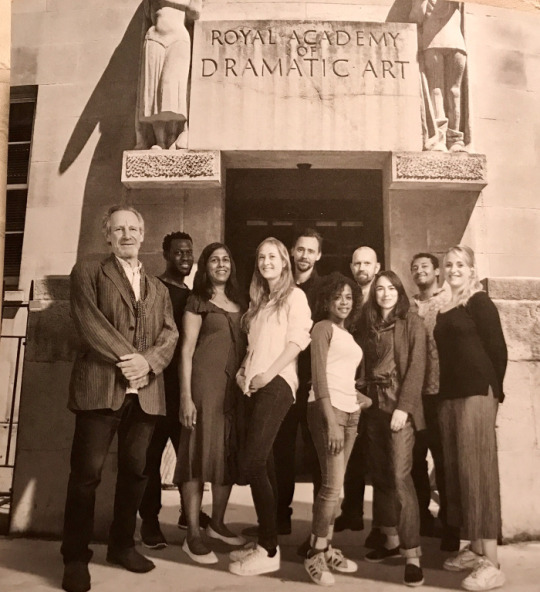
The only indication that this is where the hottest ticket of this year, for one of the most exclusive theatre events is happening, is a modest sheet of A4 paper hung on the glass-fronted building. It reads: “HAMLET. Doors open one hour before the performance.”
No posters, no production photos, nothing else.

There’s no need: the 3-week run of Hamlet with Tom Hiddleston in the title role and directed by Kenneth Branagh, staged to raise funds for a new-build RADA theatre, is sold out.
Ever since opening night the press has clamoured for the production to be streamed live in cinemas so that a wider audience can see it. There are no plans to do so, and this adds to the tingle of privilege and excitement one feels walking into the tiny horse-shoe shaped auditorium that seats a mere 160, knowing that you are one of the lucky few to bag a ticket. Even at £95 a throw.
This excitement at being at an exclusive super-star event is enhanced by the sheer physical closeness to the actors. If I reached out my hand, I could touch them. But from the moment the play starts, the actors touch me, emotionally. Hiddleston is magnificent: his range stunning. The excellent, diverse ensemble cast shines and Branagh’s direction throws fresh light on the emotional complexities of the play.
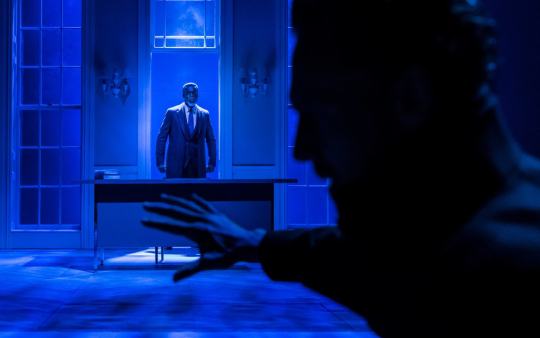
Two particular aspects of the production deepened my understanding of the dramatic possibilities of the play. The first was the emotional vulnerability Hiddleston brought to the role of Hamlet.
As the lights come up Hamlet sits centre stage at a small piano and tentatively picks out a half-remembered bluesy tune of such melancholy sweetness that it feels as if he hesitates to play the notes for fear they will evoke too much unbearable pain. Quietly mellifluous, he half-sings, half-speaks the slow, grief-filled words as they come to him, as if from far away
And will he not come again? And will he not come again? No, no, he is dead; Go to thy deathbed; He never will come again. His beard was as white as snow, All flaxen was his poll. He is gone, he is gone.
When he sings these last words his warm voice thins and cracks and tears wet his cheeks – and we keenly feel his fragility, his loneliness, his vulnerability. Shakespeare didn’t write this scene – he has us meet Hamlet for the first time in a scene characterized by brittle hostility – and I was struck by the boldness of beginning the play with what appeared to be entirely new material. But the feelings with which Tom Hiddleston imbues this song creates in the audience an empathic alignment with Hamlet’s state of mind, and this forms a bedrock of understanding that informs all that follows. When he is spiky or enraged, vengeful or cruel, we know the emotional devastation that underlies it.
I felt deeply affected as Hiddleston deftly moved through changing states of mind. When he meets Polonius he’s reading Matt Haig’s brilliant Reasons to Stay Alive, the book that like no other shows the complex thought-patterns and fluctuating mindsets that are ongoing underneath the dull exterior of depression, whilst also reminding us of the possibility of recovery. Indeed, when Hamlet engages with death beside Yorick’s graveside, he comes to life. He bounces delightfully off Ansu Kabia’s light comedic touch as the Gravedigger.
The second revelation was the genesis of Ophelia’s madness in her relationship with her father Polonius. New light was thrown on Ophelia’s character for me, not only through Branagh’s incisive direction, but also Sean Foley’s brilliant work as the oily, obsequious Polonius. The verbose character loves the sound of his own voice and has often become tedious to watch for that very reason. But Foley finds the humour in the role and makes us love to loathe him. Importantly, the insights that this production provides result from the way Foley’s Polonius engages with his children. I want to expand on that a little.
Ophelia’s brother Laertes’ injunctions as to how his sister should comport herself in his absence are rife with florid sexual references and double-entendre-laden warnings, whilst he himself tucks away a packet of condoms to show her what he will be up to whilst away. Then Polonius arrives to bid his son farewell – and presses a large carton of condoms into Laertes’ hands, in a way that demonstrates parental sexual intrusiveness. Polonius too talks to Ophelia in queasily intrusive sexual overtones.
When Ophelia comes to her father for comfort after a shocking encounter with the grief-stricken, anxious Hamlet, Polonius offers no containment to her, but rather amplifies her confusion and distress by insisting that the prince was expressing “the very ecstasy of love”. Rather than recognize that Hamlet’s grief over his recently deceased father troubles him, Polonius convinces Ophelia that she is the cause of the madness: by rejecting his love. Thus he imprints on her that her sexuality is damaging.
He does not comfort her – in fact, even as she sits distraught on the ground, he neglects her state of mind entirely and excitedly rushes to the King and Queen to tell them all about his new, titillating discovery. In Shakespeare’s original version, he goes alone, but Branagh has Polonius take his daughter with him. The shame and embarrassment to the poor girl to hear her father read Hamlet’s love letters out loud is palpable and we see her begin to fragment. This worsens as the royal couple gratefully accept Polonius’s reasoning that Ophelia’s sexual appeal is to blame for Hamlet’s “hot love” (her father’s lasciviously uttered phrase sees Ophelia cringe); that she is the cause for his descent “into a sadness, then into a fast, thence to a watch, thence into a weakness, thence to a lightness, and, by this declension, into the madness wherein now he raves.”
Polonius’ description of Hamlet’s decline serves as a template for Ophelia’s own descent into madness later on, but this particular scene reminded me powerfully of Freud’s Dora: as in her case, here too, parents and long-standing adult friends of the family blatantly connive to use and abuse a fragile teenage girl as currency in maneuvers that are designed to paper over the cracks in the adults’ own complex and unscrupulous sexual relationships.
Kathryn Wilder’s Ophelia’s slight, waif-like frame betrays how little she wishes to ‘take in’, and one can easily see why. Her father’s thoughts turn by default to her sexual collateral, and he is persistently sexually intrusive. This is combined with emotional neglect of her when she is disturbed: he walks away from her and disregards her when she is in distress. He meets her with misrecognition of her lived experience, and tells her that her perceptions are incorrect, whereas it is actually he who consistently misreads the emotional temperature. And he is manipulative: when he, Claudius and Gertrude plot to lay a trap for Hamlet, with Ophelia as bait, he makes her complicit by having her present, and therefore guilty – yet at the same time it renders her even more powerless.
The innocent and loving intimacy that exists between Hamlet and Ophelia appears to be the only affectionate relationship in her life, and one which is firmly rooted in genuinely felt reality. When Hamlet turns against her, that too is lost. When he roughly rejects her, he too misrecognises her intentions, her very essence; and he too says one thing when he feels another. This misrecognition is what undoes her.
In previous stagings, Ophelia seems to ‘just go mad’, and her madness seems inexplicably sexual in its origins and utterances. When she is mad, she sings of flowers and these are often played as sexual metaphors. But this production highlights a potential other, deeper cause. When she sings, she sings the very song that Hamlet started with. It caught my breath when I recognized the words, and it sparked my imagination. Perhaps she’d heard him sing this sad song, once? Perhaps they’d sung the song together? It reminded us, the audience, of their lifelong friendship with each other; it links her to him in a way that shifts our thoughts to her distant history. The link to the song amplifies that both youngsters lost not only a father but also each other: their friendship, their comfortable closeness, and their hopes of love.
The elements that Branagh and Foley have highlighted in Polonius’ way of being with his child, shed light on why Ophelia’s internal world would have been so fragile, so as to fragment in the way it does. It is the first time I have noticed the profundity of this constellation.
The play features many different ways of relating, notably between Hamlet and his friends, who in this production are all women. Rosacrantz and Guildastern convey the immediacy of the camaraderie between fellow students, which warms the cockles of the heart but quickly unravels in adversity. His friendship with Horatia on the other hand strengthens as time goes on: she has the capacity to listen, to recognize, and above all, to bear his experiences, unfazed. This listening relationship, in which someone can digest what you divulge to them, and think about them with you, is one of the most valuable relationships in life.
I feel privileged to have been at this performance, not because the tickets were like gold dust but for the sheer joy of being present at such a thoughtful creative process. The lack of press and the small scale of the place make for a safe space in which the players can explore the story and the feelings that arise from it. The absence of ego and of external pressures provides a sense of freedom and breathing space.
I was deeply moved by Hiddleston’s Hamlet. Branagh’s direction has thrown new light on the characters’ storylines by enriching the chains of association, and there are stand-out performances by the whole ensemble
34 notes
·
View notes